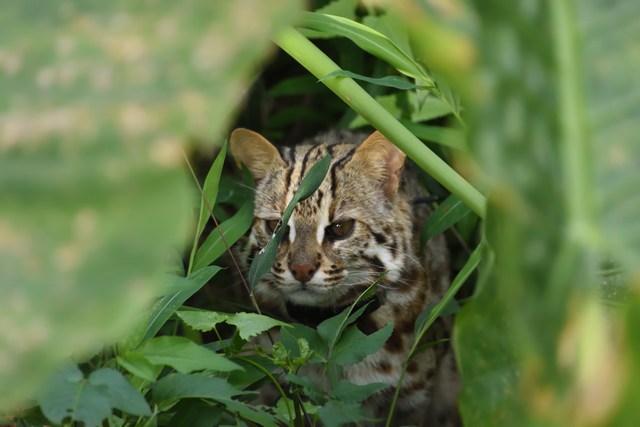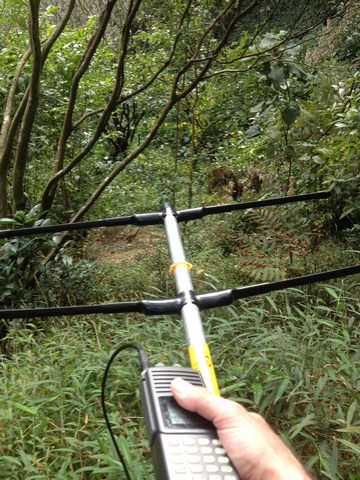Into the Wild

Raising orphaned wild animals is hard, but teaching them to live in the wild is even harder.
Last April, a member of the public started to care for what she believed to be a one-month-old stray domestic kitten at home. It wasn’t until after a month that she realized her mistake.
The feline was, in fact, a locally protected wild leopard cat.
On 13th May 2016, the leopard cat was handed over to KFBG’s Wild Animal Rescue Centre (the Rescue Centre) where it could be appropriately cared for and considered for release into the countryside.
Upon arrival, the infant appeared quite tame and dehydrated, and showed signs of diarrhoea. The Rescue Centre team immediately set to work to nurse it back to health.
Once the kitten was on the mend, it embarked on a three-stage rehabilitation process so it could have a fighting chance to survive in the wild. During 2016 the Rescue Centre had re-introduced to the wild 15 orphaned wild mammals, including squirrels, fruit bats, leopard cats and masked palm civets. And we hoped to be able to do the same for this individual.
Senior Conservation Officer Paul Crow recalled that this particular young leopard cat was quite bonded to humans. “It would approach for attention and cry for milk,” he said.
This sort of behaviour would be a major problem if the animal were released into the wild, as wild animals need to maintain caution and keep aware of humans. The key to success during rehabilitation is to withdraw the human exposure, keeping contact to a bare minimum.

“We minimize the number of staff involved when hand-rearing animals,” Paul says, “If the animal is familiar with one person, it would still feel nervous towards other humans. If we rotate the care through several people, the animal will have the impression that all humans bring food and are ‘safe’. That’s why we avoid this in our wild animal management”
The first step in its journey toward becoming a free and independent hunter was to minimize contact time with staff and expose it to a wide range of prey in varying formats and locations, such as insects on branches and small rodents hidden under leaf litter. This was to encourage natural searching and hunting behaviours.
As the kitten gained weight and confidence, we upped the challenge by offering larger prey and moving it to a larger enclosure complete with swinging branches and hiding places to encourage natural behaviours and let it develop its climbing skills.
In the last stage, to help develop the cat’s wildness, we transferred it to an isolated enclosure with minimal human disturbance and with exposure to the sounds and smells of nature.
The turning point came on 12th November 2016 when staff observed the leopard cat hunting down an adult rat, which had managed to find a way into its enclosure in search of food, with the stealth and swiftness of a true predator. Together with proof that the animal had learnt to snarl at human strangers and had grown relatively mature and strong enough to stand up for itself, we knew that the animal was ready to enter the wild again.
Eight months after it arrived at the Rescue Centre, on 4th January 2017, we fitted it with a radio collar in a joint tracking study with the Agriculture, Fisheries & Conservation Department and set it free. To make sure it was adapting well and to prove post-release survival, we kept track of its whereabouts for a month. The AFCD continued to track the cat to collate information about its movements and behaviour before the radio collar, which has a weak link that will break after several months of wear and tear, falls off.

On our last encounter, the leopard cat, now almost a year old, was eyeing us from amongst a thicket of giant alocasia plants. “It looks like it’s been feeding well and it’s clearly gaining weight,” stated Paul. “This is a very good sign.”
Please note: It is illegal to keep wild animals in captivity. And as you can tell from the story of this leopard cat, rearing young animals requires specialised dietary consideration and specialist care. So please do not attempt to handle or raise wild animals by yourself as inappropriate care may cause unnecessary suffering.
If you encounter any injured or sick wild animals, please do not hesitate to contact our staff through email (fauna@kfbg.org) or phone our hotline (2483 7200) for advice.

